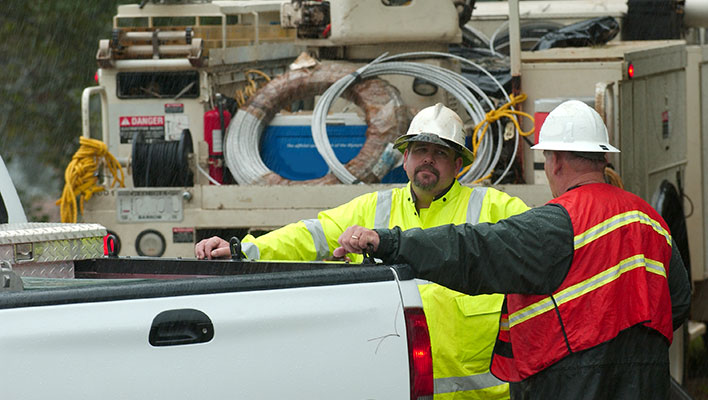ARCOS’s Jason Rhoades, Customer Success Manager, offers some insights into the Infrastructure Investment Jobs Act and how utilities may be impacted. Given the projected impact to electric utilities, it is more important than ever to establish a plan to address the required make-ready work.
When President Biden signed the $1 trillion Infrastructure Investment Jobs bill into law last November, electric utilities knew someday they’d help with “enabling middle mile broadband.” Someday is here. In the IIJ Act, Congress defines the middle mile as “any broadband infrastructure that does not connect directly to an end-user location.” The IIJ Act, in part, encourages extending middle mile infrastructure to connect the “unserved” (e.g., some rural and urban areas, Tribal lands) to the internet’s backbone.
For electric utilities, installation of fiber broadband requires make-ready work. Before the IIJ bill became law, a lot of utilities had already set placeholders for their 2023 make-ready work (based on three-year averages). For example, a large investor-owned utility might estimate 50,000 hours of make-ready work for the year. Since January, some utilities say a lot of their budgeted make-ready work has already been eaten away by jobs they’re doing to meet the IIJ Act.
By way of background, when a utility or company its contracting with wants to attach fiber to a pole, the pole’s owner may need to put in place a taller pole or larger class of structure to keep within standards. The pole’s owner might, for instance, have to move the neutral up six inches to make the pole ready to accommodate the new span of fiber.
Until recently, there hasn’t been a lot of discussions between providers of fiber broadband and the utilities owning the poles. There needs to be. Most utilities, including cooperatives, simply don’t have the internal resources to tackle this additional make-ready work, which means turning to contractors. In fact, 90 percent of the make-ready work to accommodate fiber broadband work will likely be handled by external contractors.
The IIJ Act work will exponentially add to a utility’s workload, especially for rural electric cooperatives. Think about when a contract crew drives to a pole location. They log in to at least a couple of systems along with GPS just to get there and begin working. Instead, by adopting one mobile application (think of using a single pane of glass) external resources could open a digital work order, contact a storeroom, and get turn-by-turn directions that could save each crew approximately two minutes per trip. Multiply that by the number of linemen per day per job, and the owner of these poles and its external resources save hundreds to thousands of minutes per day. That translates into more time turning wrenches and less time driving and pushing a pencil.
To that last point, consider what a crew foreman spends tracking their crew’s time to make poles ready for new fiber. A foremen could spend more than two hours per week entering and reviewing entries on timesheets. Geofencing technology paired up with a single mobile application for distributing work orders and directions, could automatically track when a contract crew leaves the service yard and arrives on a job site; that, in turn, would help the foreman shave dozens of minutes each week from timekeeping and, instead, the foreman could coach younger line workers.
With field mobility technology, once a utility awards a bid to a contractor, onboarding time is slashed. The contractor downloads the field mobility app and with, maybe, 30 minutes of training, crews are digitally handling work orders. The utility’s managers can see make-ready work happening in real time. That’s critical when you think that a single fiber broadband order might consist of 500 hours’ worth of work. Replacing written work orders with a field mobility app means a utility no longer calls a contractor multiple times per day to learn what’s happening on the job; the utility can see work happening and schedule quality checks to ensure crews are building poles the way they’ve been drawn up.
If make-ready work related to the IIJ Act’s fiber broadband initiative isn’t on your doorstep, it will be soon. Utilities are responsible for getting this work done. And the third-party fiber broadband provider is a customer. Field mobility technology can make sure utilities get the work done within the customer’s deadline, and help unserved communities get online.




